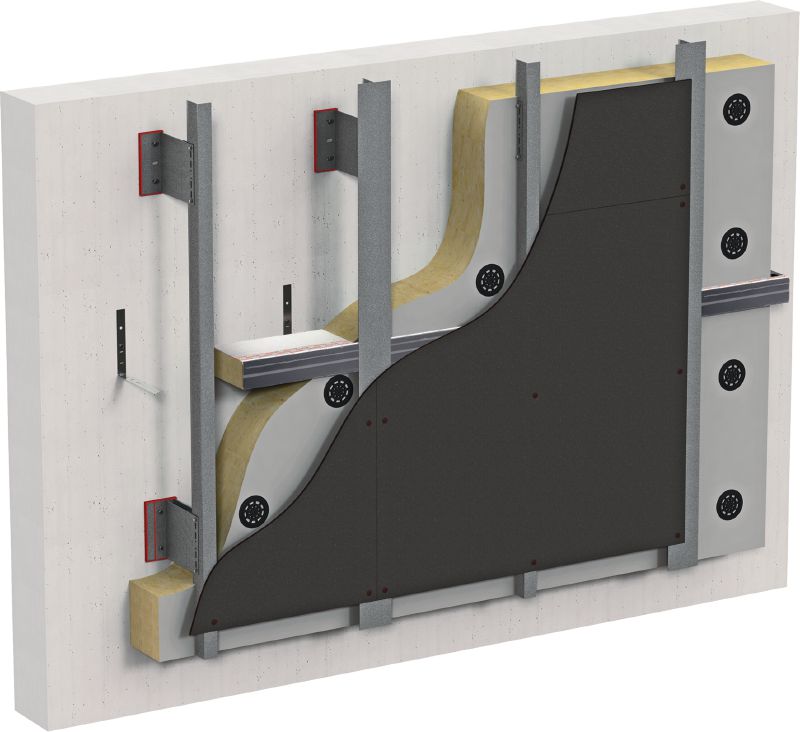
Image Source: Google
Ventilated cavity barriers are essential components in modern construction to prevent the spread of fire and smoke within a building. Understanding the importance of these barriers and how they function is crucial for ensuring the safety and compliance of your structure.
This ultimate guide will take you through everything you need to know about ventilated cavity barriers, including why they are necessary and how they work. You can also contact Acoustic And Insulation Manufacturing if you are looking for the best-ventilated cavity barriers.
Why You Need Ventilated Cavity Barriers
Fire Safety Compliance
- Building regulations require the use of cavity barriers to prevent the vertical spread of fire within a building.
- Without proper cavity barriers, fire and smoke can travel quickly through concealed spaces, endangering lives and causing extensive damage.
Smoke Control
- Ventilated cavity barriers play a crucial role in limiting the spread of smoke, which can be just as deadly as fire in a building.
- By containing smoke within compartments, cavity barriers help to maintain escape routes and protect occupants during a fire emergency.
Insulation and Energy Efficiency
- Cavity barriers can also provide insulation benefits by reducing heat loss through cavities in the building envelope.
- Improving energy efficiency through proper insulation can lead to cost savings and a smaller environmental footprint for the building.
How Ventilated Cavity Barriers Work
Key Components
- Ventilated cavity barriers are typically made of non-combustible materials, such as mineral wool or intumescent strips.
- These barriers are installed within the cavities of a building's external walls to compartmentalize the space and prevent the spread of fire and smoke.
Ventilation Openings
- One of the key features of ventilated cavity barriers is the presence of openings that allow for airflow within the cavity.
- These openings are strategically designed to balance the need for ventilation with the requirement for fire and smoke containment.
Intumescent Action
- Some ventilated cavity barriers are equipped with intumescent strips that expand when exposed to high temperatures, sealing off the cavity and preventing the passage of fire and smoke.
- This reactive feature can provide an additional layer of protection in the event of a fire, buying precious time for evacuation and firefighting efforts.
Types of Ventilated Cavity Barriers
Vertical Barriers
- Vertical cavity barriers are installed within the vertical cavities of external walls to prevent the upward spread of fire and smoke.
- These barriers are essential for maintaining compartmentation and protecting escape routes in multi-story buildings.
Horizontal Barriers
- Horizontal cavity barriers are placed within the horizontal cavities of a building to stop the lateral spread of fire and smoke.
- These barriers are critical for dividing the building into separate fire compartments and preventing the rapid progression of a fire across floors.
Retrofit Barriers
- Retrofit cavity barriers are designed for installation in existing buildings to improve fire safety measures and bring older structures up to current standards.
- These barriers offer a cost-effective solution for enhancing the fire resistance of buildings without the need for extensive reconstruction.
Installation and Maintenance
Professional Installation
- It is essential to have ventilated cavity barriers installed by qualified professionals who understand the building regulations and requirements for fire safety.
- Improper installation can compromise the effectiveness of the barriers and put the building at risk in the event of a fire.
Regular Inspections
- Regular inspections and maintenance of ventilated cavity barriers are necessary to ensure their continued functionality and compliance with fire safety standards.
- Any damage or deterioration should be promptly addressed to maintain the integrity of the barriers and the overall fire safety of the building.
Testing and Certification
- Before installation, make sure that the ventilated cavity barriers meet the required fire resistance standards and have been tested and certified by recognized authorities.
- Choosing certified barriers ensures that they have undergone rigorous testing to demonstrate their effectiveness in containing fire and smoke.
Conclusion
Ventilated cavity barriers are indispensable elements in the fire safety strategy of a building, providing essential protection against the spread of fire and smoke. By understanding the importance of these barriers and how they function, you can ensure the safety and compliance of your structure. Whether you are constructing a new building or upgrading an existing one, ventilated cavity barriers should be a top priority to safeguard occupants and assets from the devastating effects of fire.